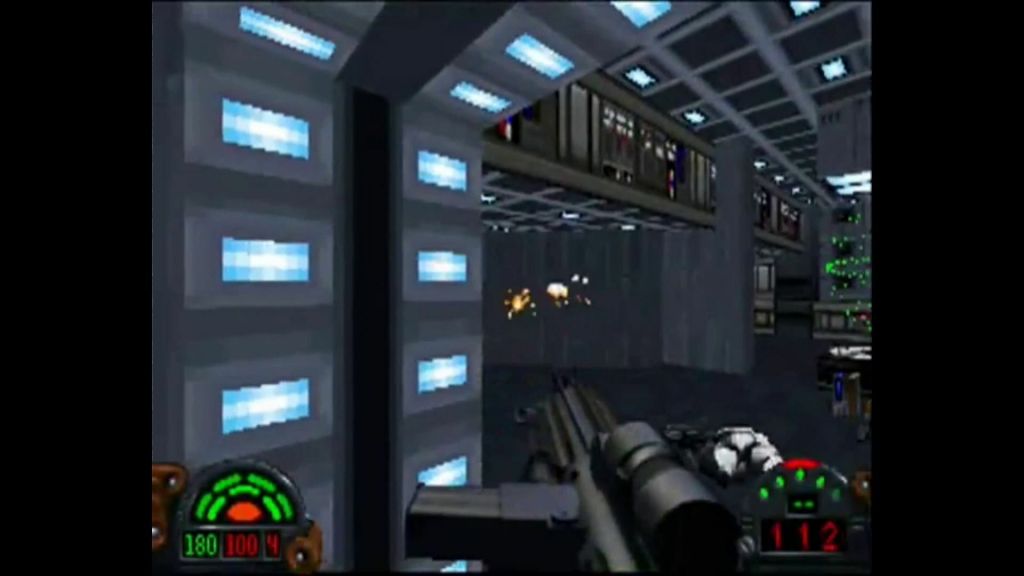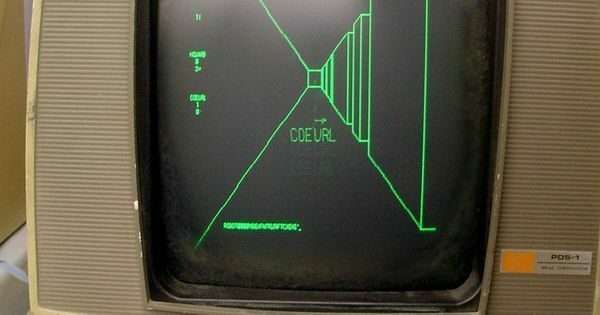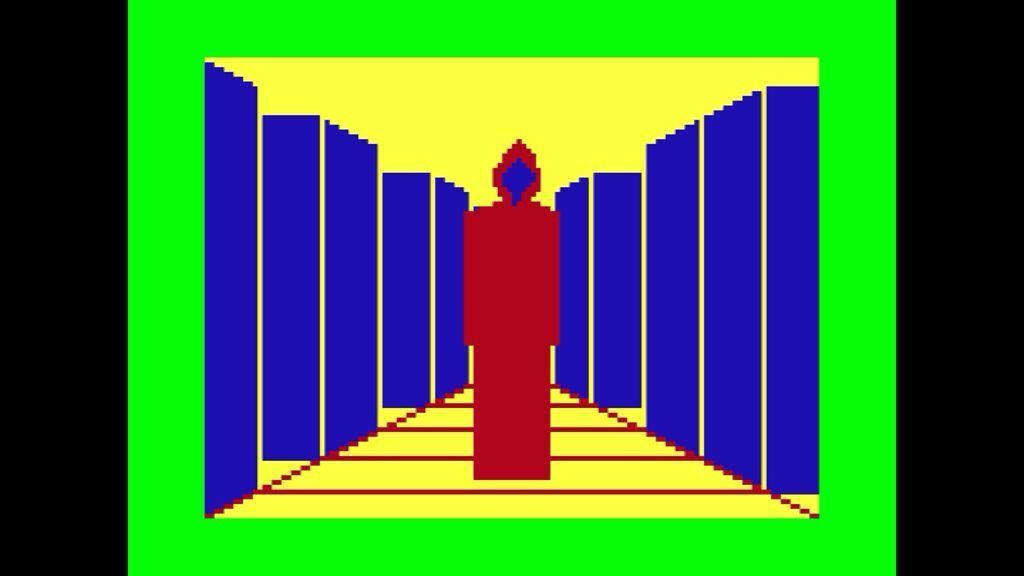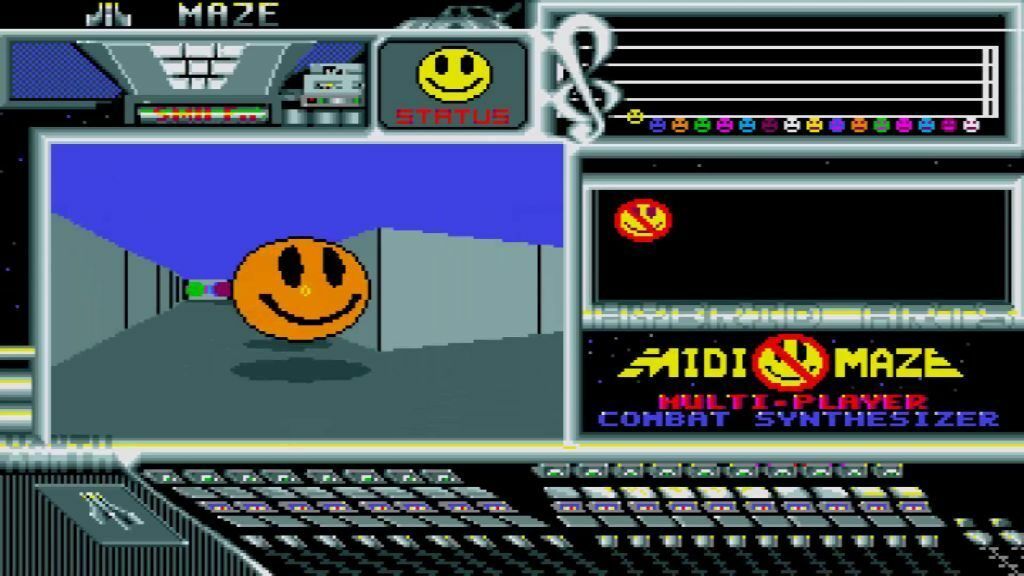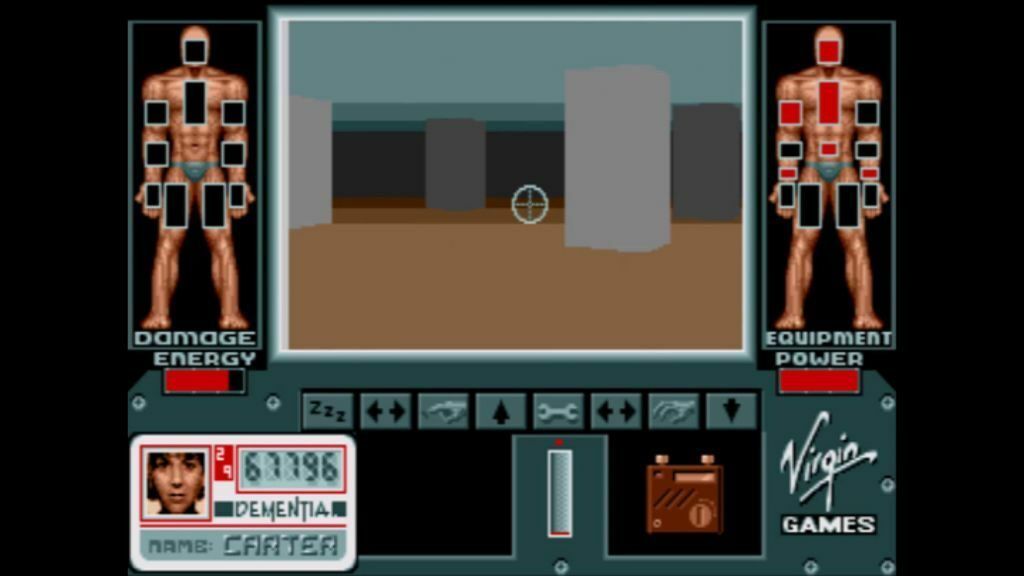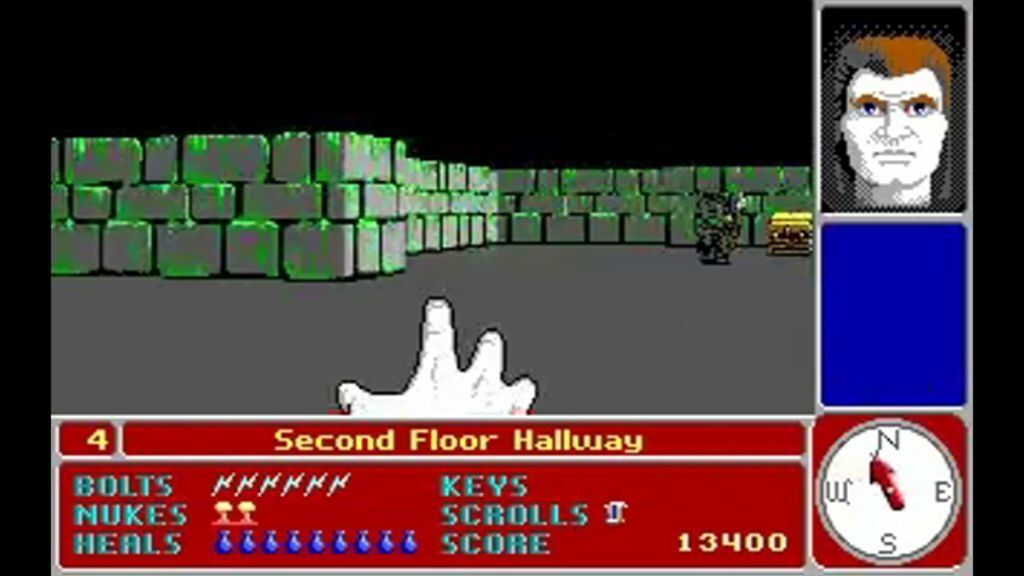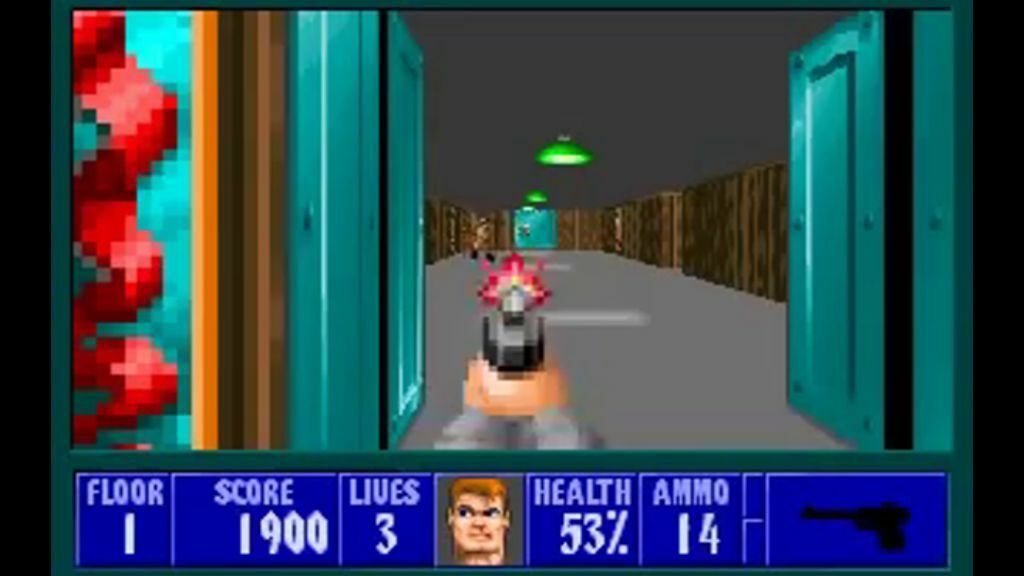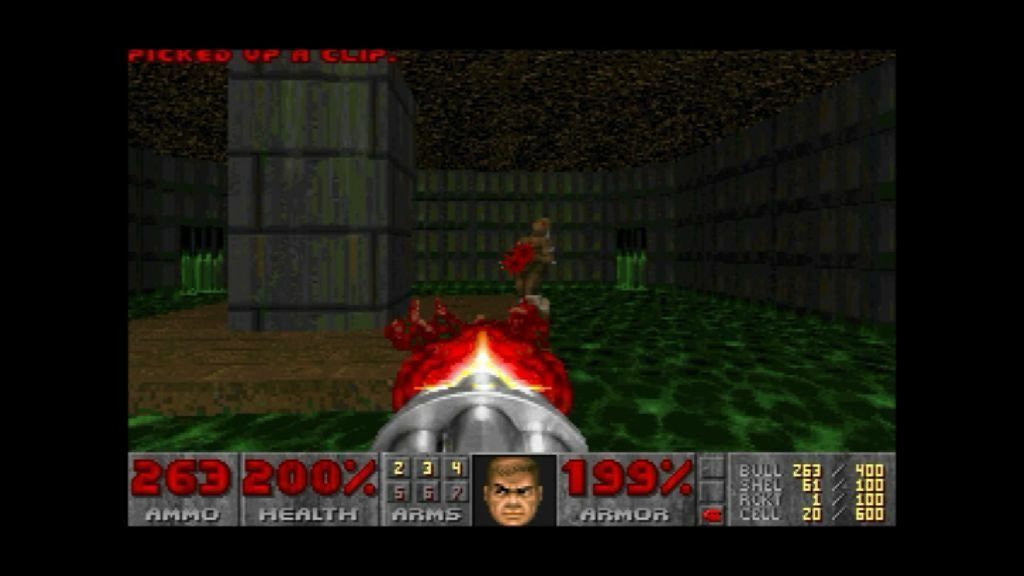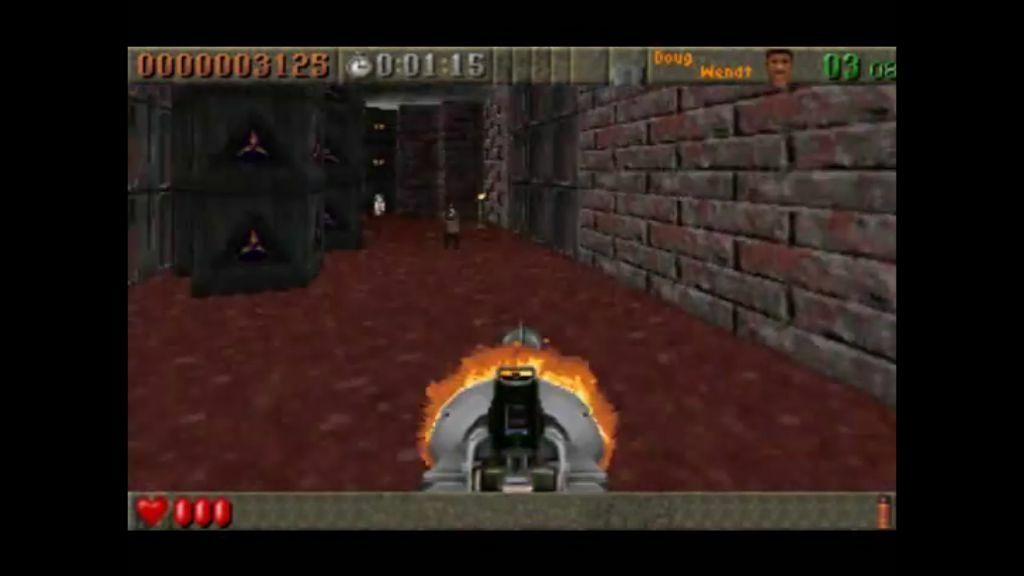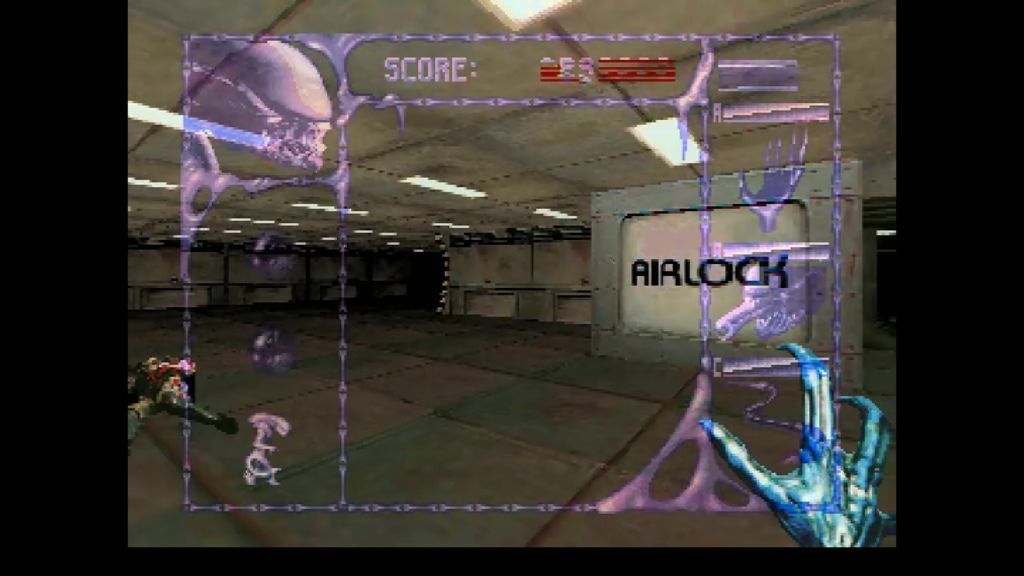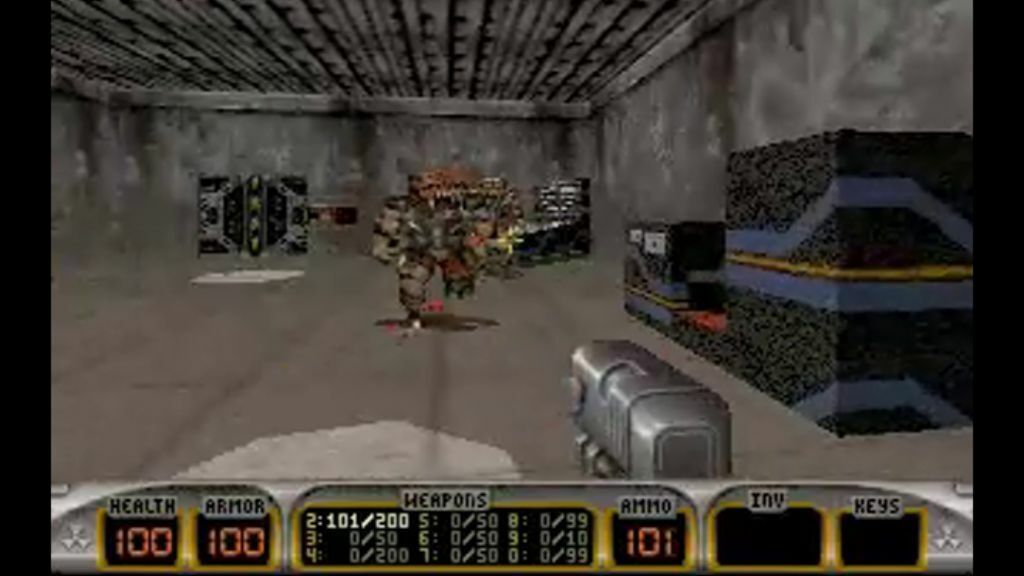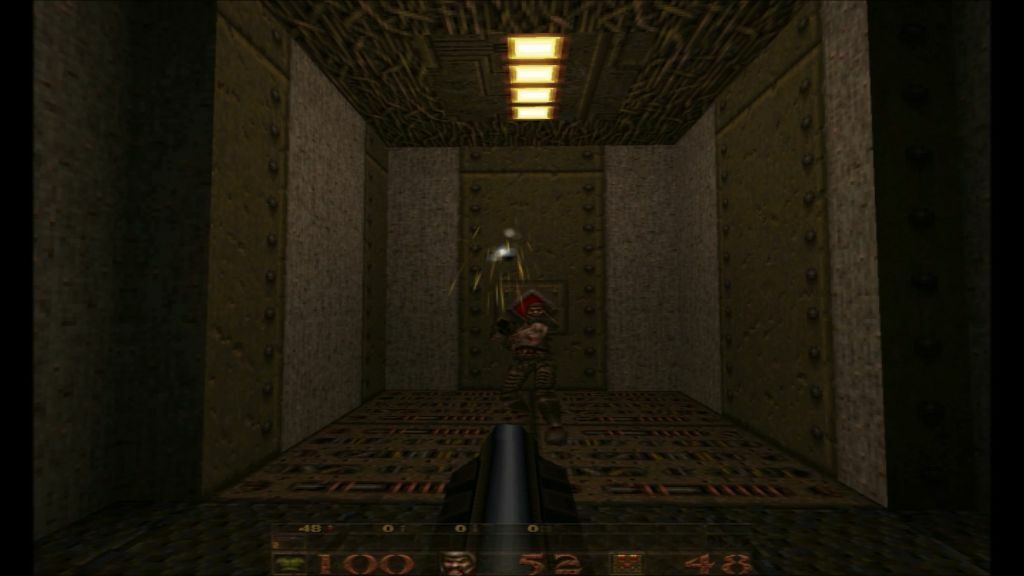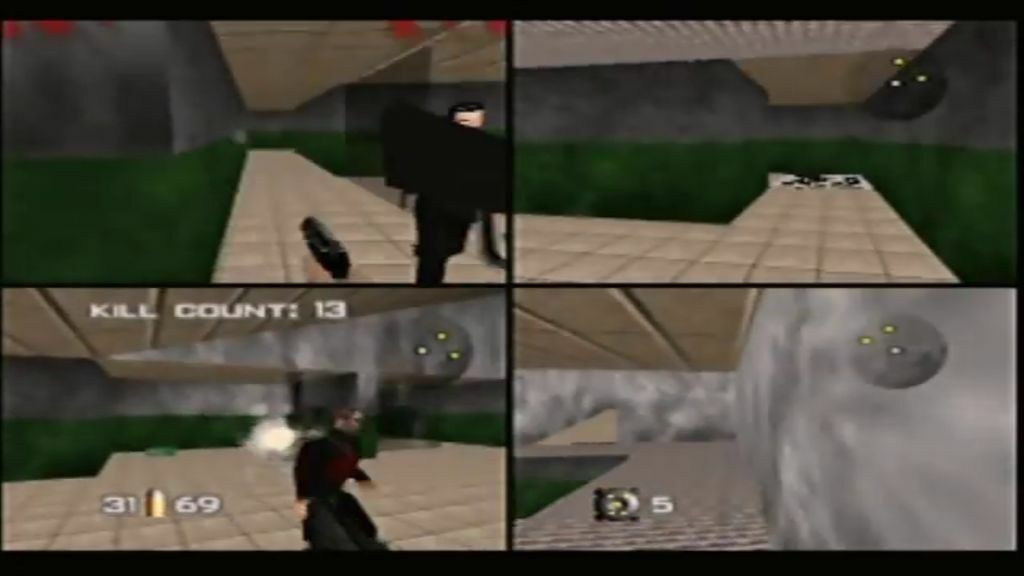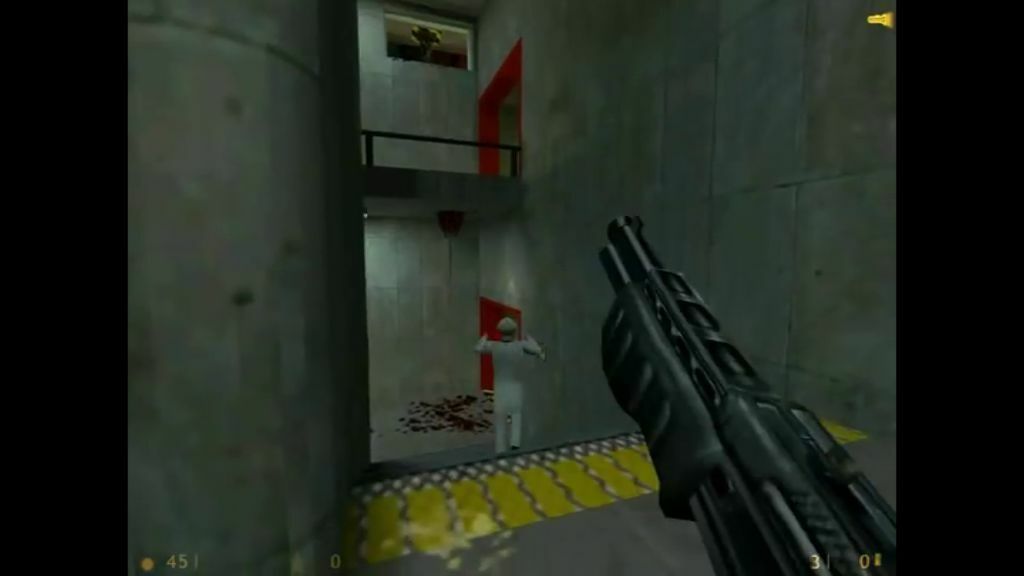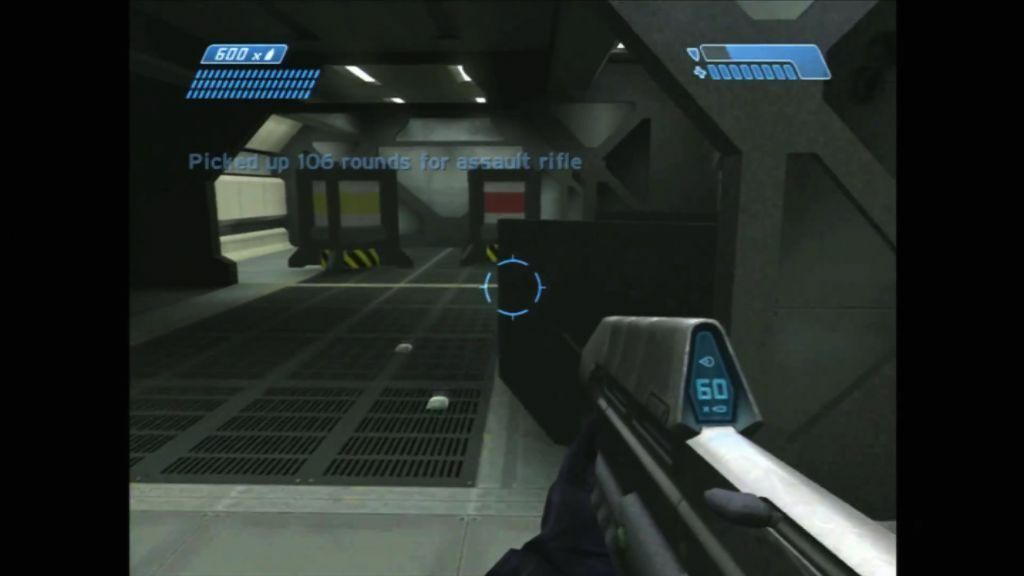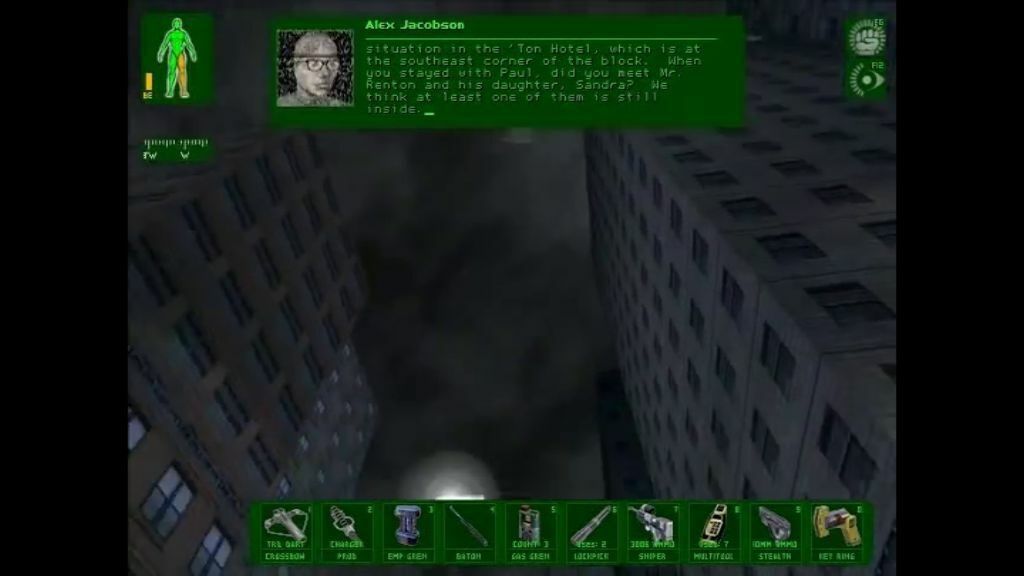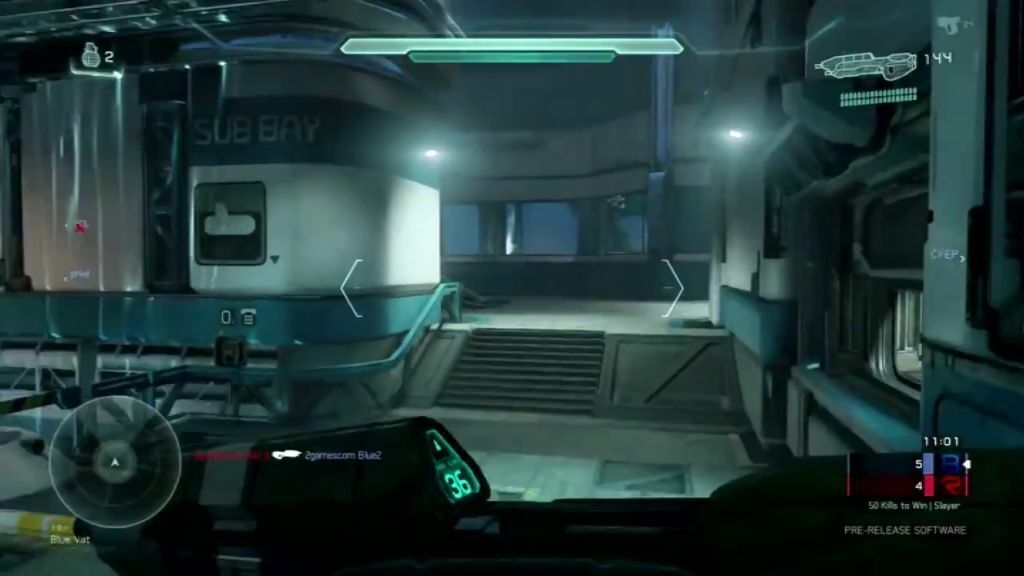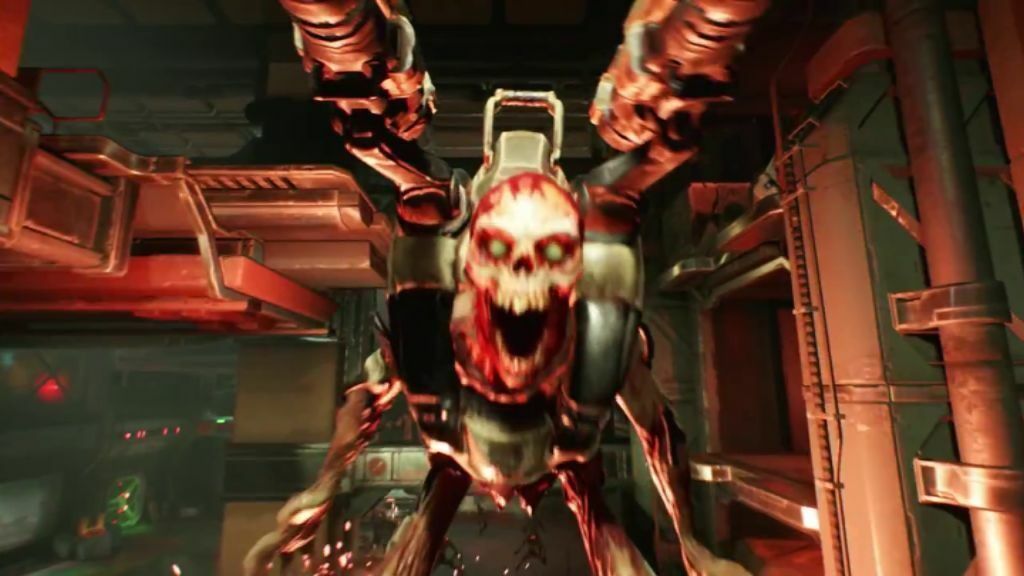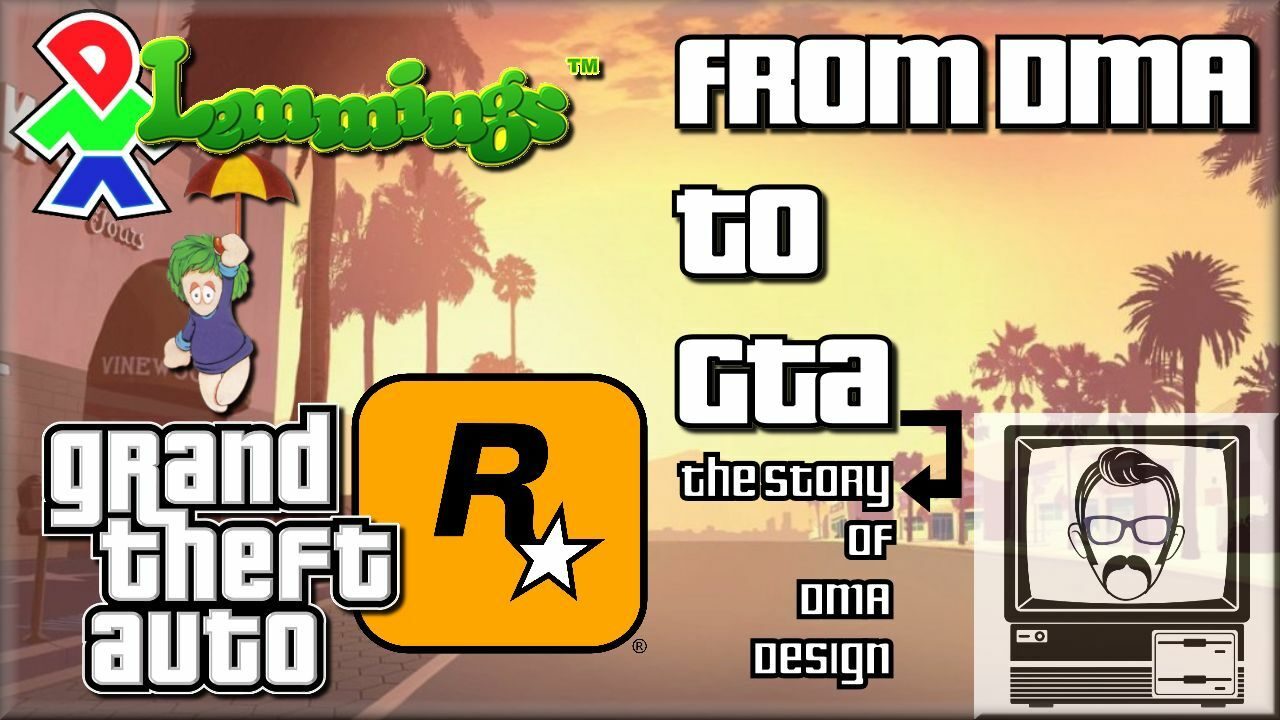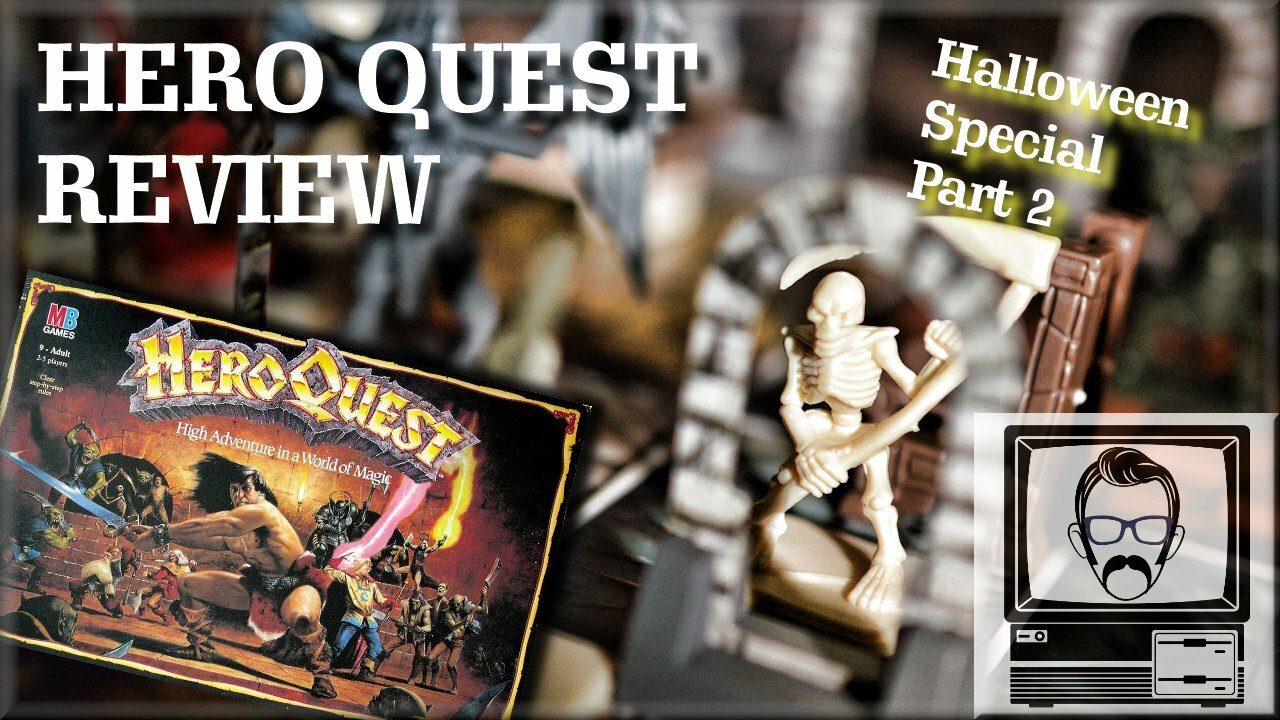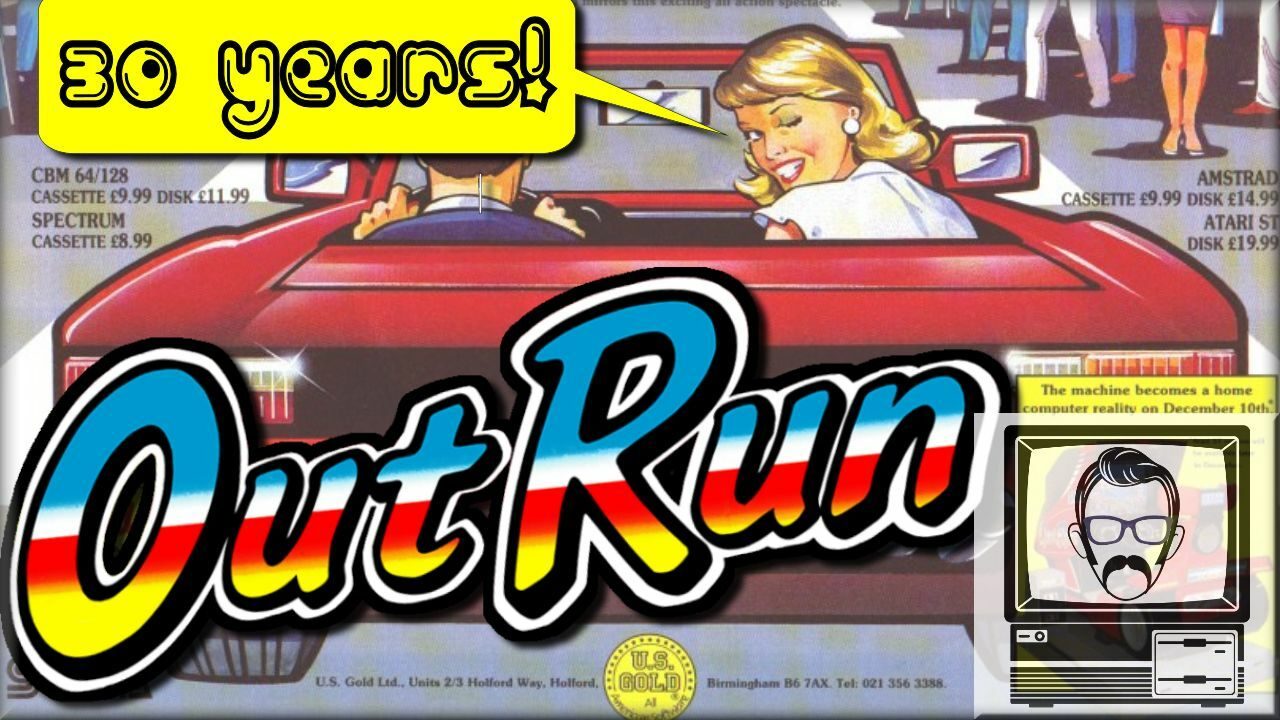Watch the Video
From the 1973 Maze Wars on the Imlac PDS-1, through to The Phantom on the Dragon 32, MIDI Maze on the Atari ST and finally where things took off with Wolfenstein 3D, Doom, Quake all the way up to present day. Join me on this epic first person shooter evolution perspective, showing the history and how dramatically the genre has changed both in gameplay, mechanics and of course, graphics!
The First Person Shooter is a game genre we’re all very familiar with. So familiar in fact that it seems to form the basis of 80% of the games which arrive on our shelves… *ahem* sorry, app stores. It makes you wonder what we did before that.
Well, I’ll tell you…. we were CREATIVE. Yes, that’s right, the 1980s witnessed a plethora of crazy and whacky game ideas, mostly teased from the brains of school kids who were high on Fiendish feet and Tab clear, and indeed one of those ideas was the First Person Shooter.
Now, I’m being slightly cynical here, because in more recent times, app stores, like Steam, have opened up a whole world of creativity once again. But there’s no denying that the FPS genre was ground breaking, and when it’s implemented correctly, it still offers one of the most immersive and thrill inducing gaming experiences we have at our disposal.
The reason for that I think is simple; we’re playing the game as we see the world. But we’re able to do crazy things inside that world. So rather than a game where you can see your protagonist. You can actually BE the protagonist. You can actually be in that world, and you can do things you’d probably get gunned down for in real life.
But where were the origins of these virtual worlds? – and for this episode, I’m talking specifically about the worlds which compose primarily of walking, having a weapon and fighting bad guys. After all, that’s what a First Person Shooter is.
Well, actually, we have to go right back to the 1973, to a game called….
Maze War
Now, given that we have to go this far back, it’s clear that recreating our world perspective inside a machine, was a very early idea, and something we obviously crave as a species. The original concept was actually written by Steve Colley at NASA’s Ames Research Center on an Imlac PDS-1. The original concept was simply navigation of a wireframe maze, held in a 16×16 bit memory array, however NASA guys got bored of just walking around the maze (they’d been to the moon for fricks sake!) so someone on the research team had the idea to network the machines and put other players in the maze. From there the idea of gunning each other down came along, and the FPS concept was born!
Phantom Slayer, Dragon 32 & TRS-80
From there, I’m gonna leap straight into 1982 and the Dragon 32, with a little known title called Phantom Slayer. Now don’t let the garish colours put you off, this game had real atmosphere, as you move around random mazes, trying to either evade the Phantoms or shoot them in the face.
MIDI Maze, Atari ST
Let’s take another leap both in bits and in years. This time to 1987, and Atari’s 16 bit ST machine. Now, even though 13 years have passed, we’re still in the maze genre, although graphics have improved and multiplayer stakes have improved. MIDI Maze offered networking of up to 16 players through the ST’s MIDI ports (hence the name) and is regarded as the game which first brought the Deathmatch genre to fruition.
Cyber Cop / Corporation, Mega Drive
A swift side step to 1991, brings us to Corporation (or Cyber Cop) on the Sega Mega Drive. Now this game brought in several elements we’re familiar with today. Gone are the maze layouts which would be more at home in an end of season Corn Field, and in their place is a sprawling building, with multiple levels, dynamic lighting AND Polygon graphics! That’s right, they might be untextured and all of a very generic grey colour, but they are true 3D polygons. Not only did this game bring new graphical elements, it also introduced stealth and hacking game play which would re-emerge at the latter part of this decade.
Catacomb 3D
Next up is the start of something special. It’s ID software’s first foray into a 3D view point, and already we can see where the games to follow got their inspiration from. There’s no gun, but you do get a Hexen or Heretic style hand on screen. The graphics are EGA and lacking considerable detail, but the engine which drove this game would go on to form the basis of our next title.
Wolfenstein 3D, PC
Only a year later in March 1992, and we arrive at a game which is really starting to look like our expected FPS format. For many, Wolfenstein is the game which really started the craze. Developed by ID software it introduced texture mapped walls, a gun in hand, different gun types, medi-packs, multiple routes, doorways and detail.
Many other games such as Blake Stone went onto use the Wolfenstein game engine, each one taking it in a slightly different direction.
Doom, PC
Now, if you’re not from the school that believes Wolfenstein 3D started the craze, then you cannot deny that DOOM was the original king of the FPS genre. It’s difficult to overestimate what Doom brought to the world of gaming, after it’s release in 1993.
Here was a sprite based, fully texture mapped game, offering an outlandish location, demons upon demons upon demons, guns, guns, guns, atmospheric music, levels with varying elevation, lifts, key cards, more atmosphere in the bucket load, gore and so much more (huh, I’m a poet and I didn’t even realise it). Doom was the first game where you really felt part of the action. A game you can get lost in, where weekends could disappear and you’d find yourself so dehydrated after a session that you were verging on medical attention.
It’s the only FPS I continually go back to again, and again, and really set the standard for what would follow.
Rise of the Triads, PC
Was one of the earliest to follow in 1994 and introduced a tremendous multi player experience and new features such as Rocket jumping, allowing you to reach new heights of elevation unheard of in Doom.
Alien vs. Predator, Atari Jaguar
Followed again in quite rapid succession, and it’s a real shame that this particular version wasn’t available on other formats, because it really is something to behold. This game paved the concept of controlling either the Marine “good guys” or the Alien “bad guys”, if that’s the way you see it, in the form of either the Predator or an Alien.
This game wasn’t really more advanced than Doom in graphical stakes, but just exuded the film atmosphere we’d all been hoping for. The fact that it was has background music just adds to the realism and tension you feel throughout.
Duke Nukem 3D, PC
Back on the PC bandwagon, we’re presented with the first game to really bring attitude and a personality to the genre. Before, we generally knew very little about our protagonist, with John Romero (who created Doom) always preferring to attach as little story as possible to his games, so that the player can bring more ownership into the game and attach their own story. But evidently, Duke was so much of a character in his own right, that it didn’t matter in this instance.
Duke Nukem 3D added another bucket load of elements to the genre, including familiar terrestrial landscapes, degrading representations of women, frequent speech by Jon St. Jon, underwater areas, jumping, attitude and various extras such as the HoloDuke.
Quake, PC
1996 was the time for ID software to pick up the baton again, which they did, exceedingly well, with Quake. Now, almost all the games which went before were sprite based, but Quake offered real time 3D rendering of everything *polygons everywhere, ahhhhhhhh*.
It also offered one of the earliest adoptions of multiple resolution choices and 3D Hardware acceleration through the OpenGL specification. Owners of Voodoo 3DFX cards received a somewhat improved gaming experience than those of us stuck with lower resolution software rendering.
Goldeneye, N64
This game has to get a mention, if for no other reason than it fully opened up the console world to the FPS genre. I mean Doom had been ported to consoles, but it was this game on the next generation hardware which really got people excited.
It featured polygon graphics of course, which by now in 1997 were standard, and expected. It also introduced players to a more realistic environment and it offered a thoroughly compelling campaign mode with stealth and good use of enemy AI. But the main draw, the ability for up to 4 player split screen mode. Who doesn’t remember a social gathering involving this game as the centre piece.
It was pant wettingly fun and really set the de’facto standard for console FPS games.
Half Life, PC
Meanwhile, back on the PC, things were going in a more intellectual direction, with the 1998 release of Half Life.
This game tried to hark back to more immersive experiences, and so negated cut scenes in favour of uninterrupted control of your protagonist, Dr. Gordon Freeman, with in game scripted elements seen through the eyes of your character.
This game also introduced a heavy puzzle element and continuous flowing gameplay, which added to the realism and really put you in the world of Dr. Freeman. The fact, he is again a non speaking protagonist, helps you to merge with him, rather than being seen as a separate character you’re controlling.
Rainbow 6, PC
1998 again witnessed a heavy tactical element addition to the genre, in the form of Tom Clancy’s squad based game. Realism is king here, with single bullets able to dispatch enemies with a carefully placed head shot, rather than having to fire more ammo in weight than your enemy probably weighs, in order to dispatch them.
Halo, XBox
And so, this brings me onto Halo, and for me, this is where I can really finish off the FPS evolution story.
Halo was revolutionary in introducing massive roaming landscapes, a detailed story line, a heads up display, multiple weapon choices, including use of enemy guns, duel wielding and the ability to throw grenades without switching weapons.
It also introduced the mainstream to the Energy shield concept. So rather than having to scavenge for medi-packs, you could just hold out for your shield to recharge before going back into combat.
I must admit all these elements work well within this game, and they make Halo what it is…. erm… Halo. But I’ll always crave the minimal story line, medi-pack collecting format of Doom, and even though it’s a small thing, I really miss seeing Doom Guy’s face on the screen. I feel that component alone added so much to the gameplay… it allowed you to continuously connect with your character, without really detracting from your embodiment of him.
There have been loads of advances in the FPS genre since then with RPG elements from Borderlands, Deus Ex which took what Half Life started and just made it better, better level, design, rpg elements and immersive gameplay, zombie frenzies with Left 4 Dead and the even grander open world experiences of Far Cry. But I feel all these successors had their origins in these original creations.
Graphically I can surmise the evolution of the FPS from Halo up to now simply through the Halo series. As you can see, resolution has increased, fidelity has increased, and the visuals have come on great guns, no pun intended.
And I feel that’s where we are now. We’re in a period of improvement. Improvement on a genre which has been refined through countless games, to where we are now… which is great. But you know what? I don’t half wish for the days of creativity we experienced in the 80s and 90s.
The new reincarnation of Doom has a lot to live up to.
Oh, Call of Duty… yeah, I left that out intentionally.

Nostalgia Nerd is also known by the name Peter Leigh. They routinely make YouTube videos and then publish the scripts to those videos here. You can follow Nostalgia Nerd using the social links below.

